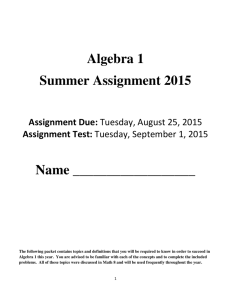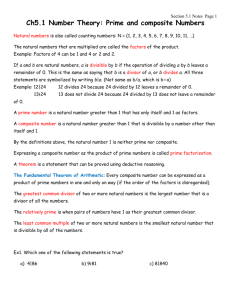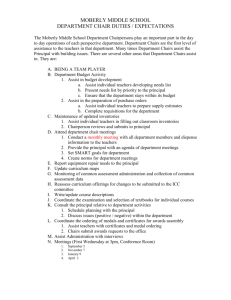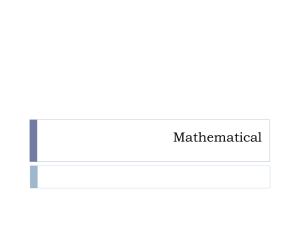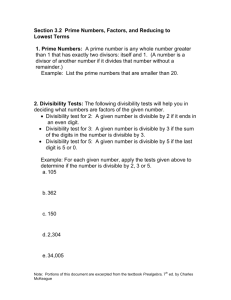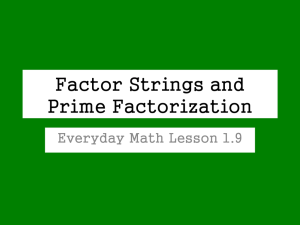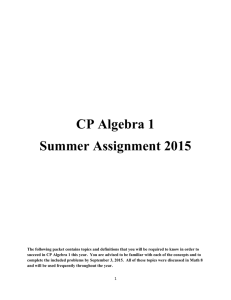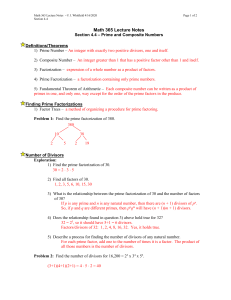Understanding the meaning of multiplication
advertisement
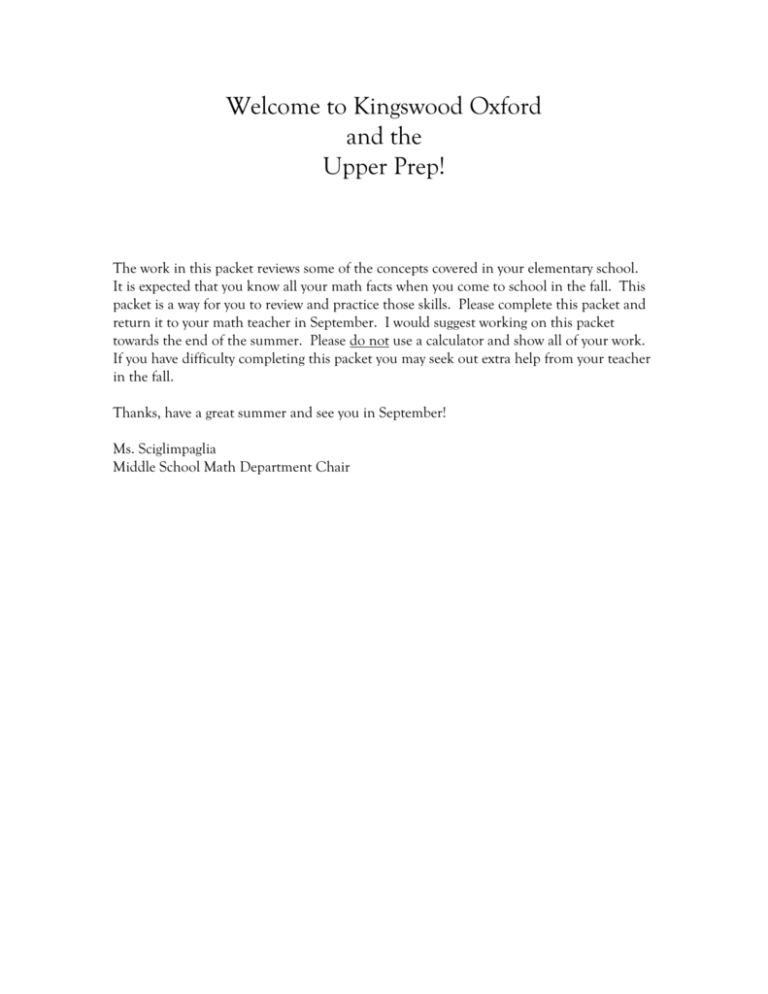
Welcome to Kingswood Oxford and the Upper Prep! The work in this packet reviews some of the concepts covered in your elementary school. It is expected that you know all your math facts when you come to school in the fall. This packet is a way for you to review and practice those skills. Please complete this packet and return it to your math teacher in September. I would suggest working on this packet towards the end of the summer. Please do not use a calculator and show all of your work. If you have difficulty completing this packet you may seek out extra help from your teacher in the fall. Thanks, have a great summer and see you in September! Ms. Sciglimpaglia Middle School Math Department Chair Tangle Table: These are multiplication tables that have been scrambled. Use the given clues to fill in all the empty spaces. X 1 2 4 24 3 9 28 15 30 2 X 1 4 4 12 15 9 49 6 36 28 25 16 15 Fill in the boxes with single-digit numbers that will make a correct computation problem. Show all your work. 2 X 7 196 X 3 08 6 48 444 X 2664 In these multiplication and division problems fill in the missing numbers. Show how you got your answer! Show all your work. 1.) Sharon has 7 shirts and 4 pairs of jeans. How many different outfits can she wear? (An outfit consists of a shirt and a pair of jeans). Show how you found your answer. 2) Find the prime factorization of the following two numbers. Show your work. a. 72 b. 132 3. A number that is less than 85 has 26 and 6 as factors. Find the number and explain your reasoning. 4.) Carlos is packing bags for treats at Halloween. Each bag has to have exactly the same stuff in it or the neighborhood kids will complain. He has 96 small candy bars and 64 small popcorn balls. a. What is the greatest number of treat bags he can make? b. How many of each kind of treat is in one bag? 5.) List all the factors of 30. 6.) List all the factors of 42. 7.) What is the greatest common factor of 30 and 42. 8) List all multiples of 6 between 1 and 100. What do these numbers have in common? 9) A number has 4 and 5 as factors. a) What other numbers must be factors? Explain. b) What is the smallest the number could be? 10) Chairs for a meeting are arranged in 6 rows. Each row has the same number of chairs. a) What is the minimum possible number of chairs that could be in the room? b) Suppose 100 is the maximum number of chairs allowed in the meeting room. What other numbers of chairs are possible? 11. Circle the letter(s) of the statements that are always TRUE about any prime number. a. It is divisible by only itself and 1. b. It is a factor of 1. c. It is divisible by another prime number. d. It is always an odd number. 12. What is the smallest number divisible by the first three prime numbers and the first three composite numbers? Explain. 13.) Ms. Tomkiel has developed a rule for generating a number sequence. The first six numbers in her sequence are 7, 21, 42, 126, 252, 756. a. What is Ms. Tomkiel’s rule for finding the numbers in her sequence? Explain. b. What are the next two numbers in the sequence? c. What is the greatest common factor (GCF) of all the terms in Ms. Tomkiel’s sequence? Explain your reasoning. 14.) Write the prime factorization of 100. 15.) “Sam” and “Martha” are the local names for two lighthouses that guard a particularly dangerous part of the coast. Same blinks ever 12 seconds and Martha blinks every 8 seconds. They blink together at midnight. How many seconds will pass before they blink together again?
